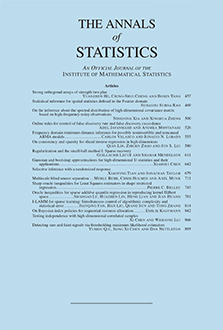Abstract
Identifying causal parameters from observational data is fraught with subtleties due to the issues of selection bias and confounding. In addition, more complex questions of interest, such as effects of treatment on the treated and mediated effects may not always be identified even in data where treatment assignment is known and under investigator control, or may be identified under one causal model but not another.
Increasingly complex effects of interest, coupled with a diversity of causal models in use resulted in a fragmented view of identification. This fragmentation makes it unnecessarily difficult to determine if a given parameter is identified (and in what model), and what assumptions must hold for this to be the case. This, in turn, complicates the development of estimation theory and sensitivity analysis procedures.
In this paper, we give a unifying view of a large class of causal effects of interest, including novel effects not previously considered, in terms of a hierarchy of interventions, and show that identification theory for this large class reduces to an identification theory of random variables under interventions from this hierarchy. Moreover, we show that one type of intervention in the hierarchy is naturally associated with queries identified under the Finest Fully Randomized Causally Interpretable Structure Tree Graph (FFRCISTG) model of Robins (via the extended g-formula), and another is naturally associated with queries identified under the Non-Parametric Structural Equation Model with Independent Errors (NPSEM-IE) of Pearl, via a more general functional we call the edge g-formula.
Our results motivate the study of estimation theory for the edge g-formula, since we show it arises both in mediation analysis, and in settings where treatment assignment has unobserved causes, such as models associated with Pearl’s front-door criterion.
Citation
Ilya Shpitser. Eric Tchetgen Tchetgen. "Causal inference with a graphical hierarchy of interventions." Ann. Statist. 44 (6) 2433 - 2466, December 2016. https://doi.org/10.1214/15-AOS1411
Information





